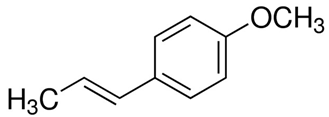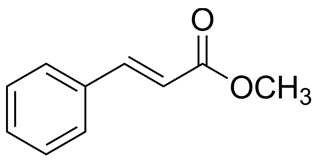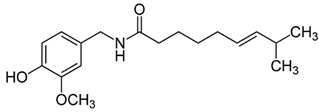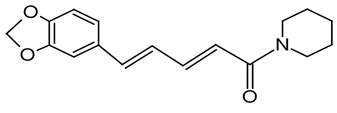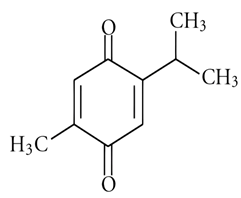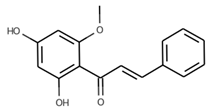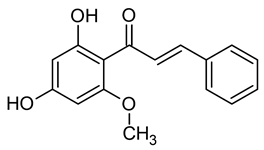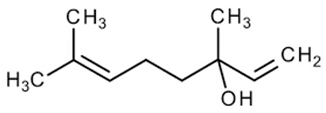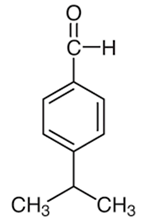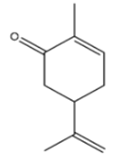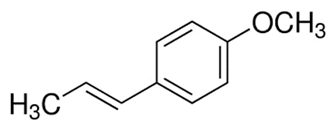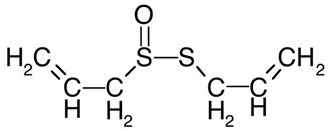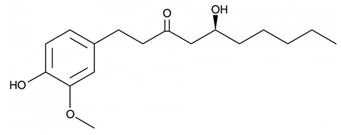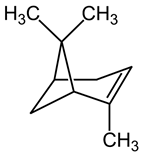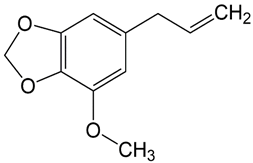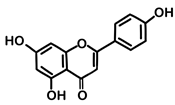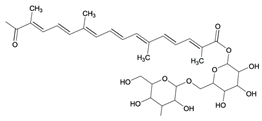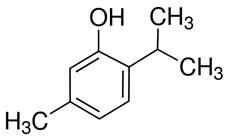Throughout history, spices have been employed for their pharmaceutical attributes and as a culinary enhancement. The food industry widely employs artificial preservatives to retard the deterioration induced by microbial proliferation, enzymatic processes, and oxidative reactions. Nevertheless, the utilization of these synthetic preservatives in food products has given rise to significant apprehension among consumers, primarily stemming from the potential health risks that they pose. These risks encompass a spectrum of adverse effects, including but not limited to gastrointestinal disorders, the disruption of gut microbiota, allergic reactions, respiratory complications, and concerns regarding their carcinogenic properties. Consequently, consumers are displaying an increasing reluctance to purchase preserved food items that contain such additives. Spices, known for their antimicrobial value, are investigated for their potential as food preservatives.
- food safety
- preservatives
- microbial inhibition
- food-spoilage microorganisms
- antibacterial agents
- food industry
- bio-preservation strategies
1. Introduction
2. Artificial Food Preservatives
- (i)
-
Organic acids, such as ascorbic acid, acetic acid, and benzoic acid, are widely used in acidic food products to prevent microbial growth [13];
- (ii)
-
Nitrites and nitrates are commonly applied in cured meat products to inhibit the growth of Clostridium botulinum and provide color stabilization [13];
- (iii)
-
Sulfites are utilized in dried fruits, wines, and juices to control microbial activity and prevent browning [14];
- (iv)
-
Antioxidants, including butylated hydroxyanisole (BHA) and butylated hydroxytoluene (BHT), are used to extend the shelf life of products containing fats and oils [15];
- (v)
-
Antibiotics: nisin and natamycin are examples of antibiotics used to preserve a variety of food items [16].
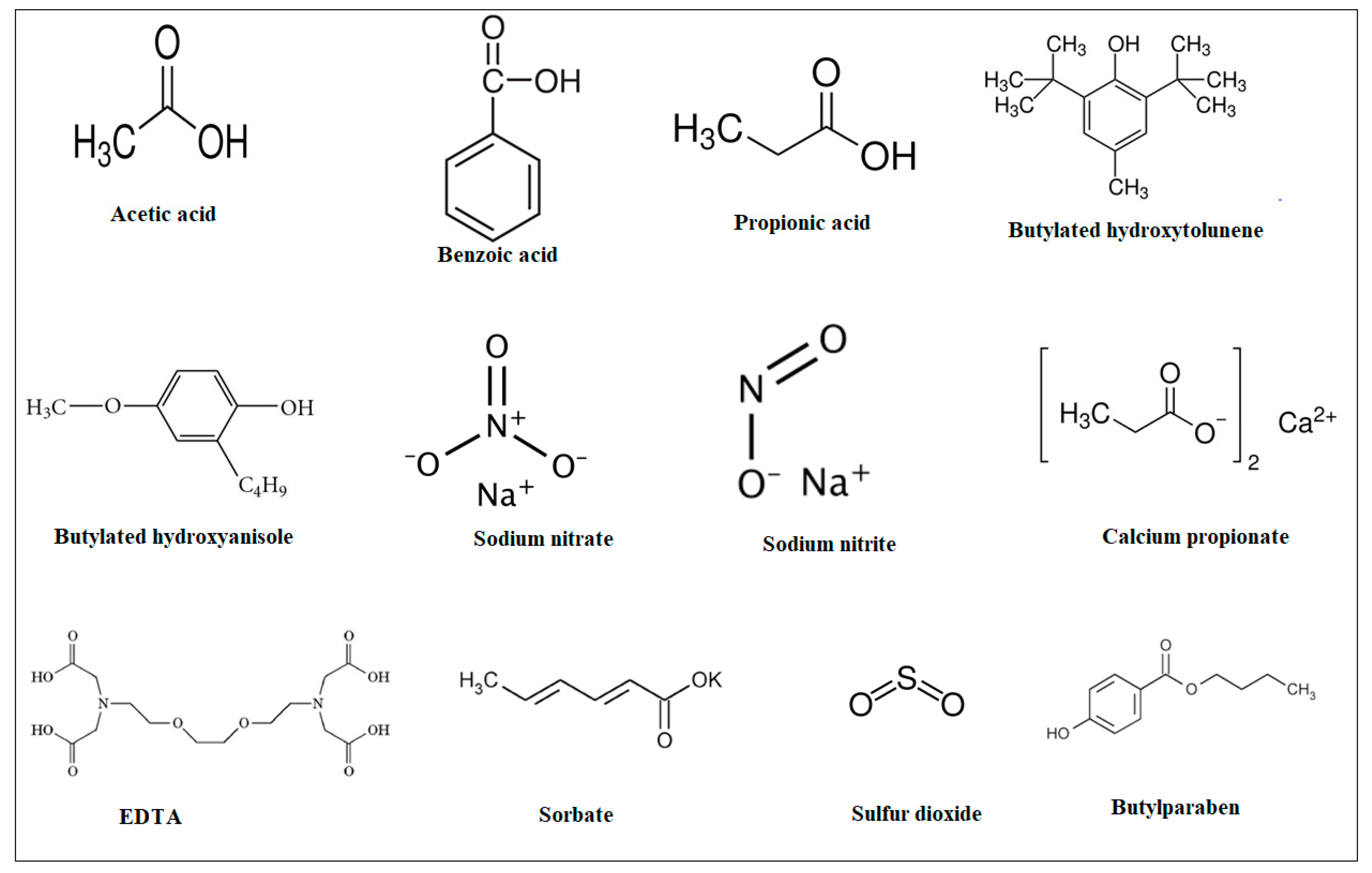
3. Side Effects of Artificial Food Preservatives

4. Food Spoilage Microorganisms
5. Natural Antimicrobial Agents
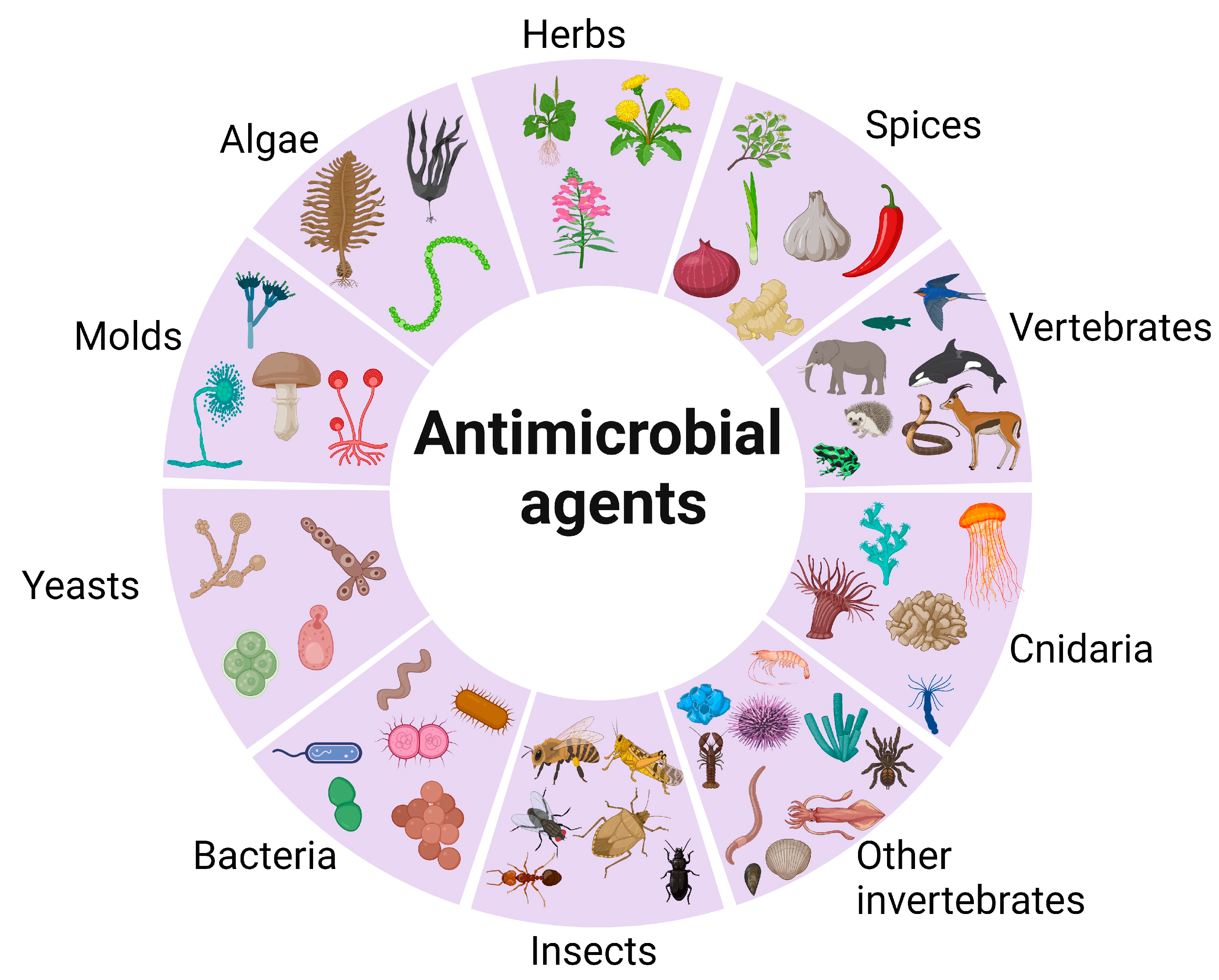
6. Spices as a Source of Natural Antimicrobial Agents
7. Suggested Antimicrobial Spices for Food Preservation
|
No. |
Spice |
Scientific Name |
Botanical Family |
Major Bioactive Compound |
Chemical Structure |
Antimicrobial Activity |
Ref. |
|---|---|---|---|---|---|---|---|
|
1 |
Allspice |
Pimenta dioica (L.) Merr. |
Myrtaceae |
Eugenol |
|
Listeria monocytogenes CECT 933, Vibrio vulnificus CECT 529, Salmonella enterica CECT 443, Shigella flexeneri CECT 4804, Escherichia coli ATCC 35218, Staphylococcus aureus ATCC 6538, and Aspergillus flavus. |
|
|
2 |
Anise |
Pimpinella anisum L. |
Apiaceae |
Anethole |
|
Escherichia coli ATCC 25922, Staphylococcus aureus ATCC 25923, Pseudomonas aeruginosa ATCC 27853, Streptococcus pyogenes ATCC 19615, and Candida albicans ATCC 10231. |
|
|
3 |
Basil |
Ocimum basilicum L. |
Lamiaceae |
Methyl cinnamate |
|
Staphylococcus epidermidis MTCC 435, Streptococcus mutans MTCC 890, Escherichia coli MTCC 723, Candida kefyr ATCC 204093, and Candida albicans ATCC 14053. |
|
|
4 |
Bell pepper |
Capsicum annuum L. |
Solanaceae |
Capsaicinoids |
|
Listeria monocytogenes, Salmonella typhimurium, Staphylococcus aureus, Escherichia coli, Bacillus subtilis, Proteus mirabilis, Lactobacillus plantarum, Lactobacillus acidophilus, and Cochliobolus spp. |
|
|
5 |
Black Pepper |
Piper nigrum L. |
Piperaceae |
Piperine |
|
Klebsiella pneumonia ATCC 27853, Escherichia coli ATCC 25922, Salmonella enterica ATCC 43972, Staphylococcus aureus ATCC 25923, Enterococcus faecalis ATCC 29122, Staphylococcus epidermidis ATCC 14990, Bacillus subtilis ATCC 6633, and Aspergillus flavus CGMCC 3.06434. |
|
|
6 |
Black seeds |
Nigella sativa L. |
Ranunculaceae |
Thymoquinone |
|
Escherichia coli, Klebsiella pneumoniae, Staphylococcus aurous, Enterobacter aerogenes, Fusarium Solani, Candida albicans AUMC 1299, Aspergillus flavus AUMC 1276, Fusarium oxysporum AUMC 215, Scopulariopsis brevicaulis AUMC 1653, Geotrichum candidum AUMC 226, and Trichophyton rubrum AUMC 1804. |
|
|
7 |
Caraway |
Carum carvi L. |
Apiaceae |
Carvone |
|
Escherichia coli, Pseudomonas aeruginosa, Staphylococcus aureus, Bacillus cereus, and Aspergillus flavus. |
|
|
8 |
Cardamom |
Elettaria cardamomum (L.) Maton |
Zingiberaceae |
Cardamonin |
|
Bacillus subtilis, Staphylococcus aureus, Pseudomonas aeruginosa and methicillin-resistant Staphylococcus aureus (ATCC 43300), Salmonella typhimurium (ATCC 14023), and Escherichia coli (ATCC 25922). |
|
|
9 |
Cinnamon |
Cinnamomum verum J.Presl |
Lauraceae |
Cinnamaldehyde |
|
Micrococcus luteus, Bacillus subtilis, Bacillus cereus, Klebsiella aerogenes, Escherichia coli, Salmonella enterica, Penicillium expansum, Candida albicans, and Candida tropicalis. |
|
|
10 |
Clove |
Syzygium aromaticum (L.) Merr. & L.M.Perry |
Myrtaceae |
Eugenol |
|
Staphylococcus aureus, Listeria innocua, Pseudomonas aeruginosa. Serratia marcescens, Bacillus subtilis, Penicillium commune, Penicillium expansum, Penicillium glabrum, and Penicillium chrysogenum |
|
|
11 |
Coriander |
Coriandrum sativum L. |
Apiaceae |
Linalool |
|
Bacillus subtilis, Stenotrophomonas Penicillium expansum, Streptococcus pyogenes, Listeria monocytogenes, Enterobacter aerogenes, Salmonella typhimurium, and Shigella dysenteriae. |
|
|
12 |
Cumin |
Cuminum cyminum L. |
Apiaceae |
Cuminaldehyde |
|
Staphylococcus aureus, Bacillus cereus, Escherichia coli, Salmonella typhi, Botrytis cinerea, Penicillium expansum, and Aspergillus niger. |
|
|
13 |
Dill |
Anethum graveolens L. |
Apiaceae |
Carvone |
|
Escherichia coli, Staphylococcus aureus, Yersinia enterocolitica, Geotrichum candidum, Salmonella typhimurium, Rhodotorula glutinis, Saccharomyces cerevisiae, and Candida albicans. |
|
|
14 |
Fennel |
Foeniculum vulgare Mill. |
Apiaceae |
Anethole |
|
Staphylococcus albus, Bacillus subtilis, Salmonella typhimurium, Shigella dysenteriae, Escherichia coli, Bacillus cereus, Staphylococcus aureus, Candida albicans, and Aspergillus flavus. |
|
|
15 |
Fenugreek |
Trigonella foenum-graecum L. |
Fabaceae |
Sotolone |
|
Staphylococcus aureus ATCC 25923, Escherichia coli ATCC 25922, Bacillus subtilis NCTC 8236, Pseudomonas aeruginosa ATCC 27853, Aspergillus niger ATCC 9763, and Candida albicans ATCC 7596. |
|
|
16 |
Garlic |
Allium sativum L. |
Amaryllidaceae |
Allicin |
|
Staphylococcus saprophyticus, Staphylococcus aureus, Staphylococcus epidermidis, Bacillus cereus, Streptococcus pneumoniae, Shigella flexneri, Proteus vulgaris, Klebsiella pneumoniae, Escherichia coli, Aspergillus versicolor, Penicillium expansum, Penicillium citrinum, and Candida albicans. |
|
|
17 |
Ginger |
Zingiber officinale Roscoe |
Zingiberaceae |
Gingerol |
|
Staphylococcus epidermidis, Staphylococcus aureus, Enterococcus faecalis, Streptococcus faecalis, Bacillus subtilis, Bacillus megaterium, Bacillus cereus, Escherichia coli, Klebsiella pneumoniae, Salmonella typhimurium, Salmonella typhi, Pseudomonas aeruginosa, Proteus spp., Aspergillus niger, Aspergillus flavus, Penicillium expansum, Alternaria alternata, Fusarium oxysporum, Mucor hemalis, Penicillium notatum, Candida albicans, and Fusarium oxysporum. |
|
|
18 |
Mastic |
Pistacia lentiscus L. |
Anacardiaceae |
α-pinene |
|
Escherichia coli, Staphylococcus aureus, Bacillus subtilis, Helicobacter pylori, Streptococcus mutans, Microsporum canis, Trichophyton mentagrophytes, and Trichophyton violaceum. |
|
|
19 |
Nutmeg |
Myristica fragrans Houtt. |
Myristicaceae |
myristicin |
|
Staphylococcus aureus MTCC 737, Bacillus subtilis MTCC 441, Pseudomonas putida MTCC 1072, Pseudomonas aeruginosa MTCC 7903, Listeria monocytogenes, Aspergillus flavus MTCC 277, Aspergillus niger MTCC 282, and Aspergillus fumigatus MTCC 343. |
|
|
20 |
Parsley |
Petroselinum crispum (Mill.) Fuss |
Apiaceae |
Apigenin |
|
Salmonella enterica, Staphylococcus aureus, Listeria monocytogenes, Penicillium ochrochloron, and Trichoderma viride |
|
|
21 |
Rosemary |
Rosmarinus officinalis L. |
Lamiaceae |
Rosmarinic acid |
|
Bacillus cereus, Staphylococcus aureus, Salmonella choleraesuis, Clostridium perfringens, Aeromonas hydrophila, Escherichia coli, Listeria monocytogenes, and Brochothrix thermosphacta. |
|
|
22 |
Saffron |
Crocus sativus L. |
Iridaceae |
Crocin |
|
Klebsiella pneumoniae, Pseudomonas aeruginosa, Proteus vulgaris, Staphylococcus aureus, Escherichia coli, Candida albicans, Aspergillus fumigatus, and Aspergillus niger. |
|
|
23 |
Thyme |
Thymus vulgaris L. |
Lamiaceae |
Thymol |
|
Pseudomonas aeruginosa ATCC 27853, Staphylococcus aureus ATCC 25923, Salmonella typhimurium ATCC 14028, Klebsiella pneumoniae ATCC 13882, Enterococcus faecalis ATCC 29212, Escherichia coli ATCC 25922, and Candida albicans ATCC 10231. |
|
|
24 |
Turmeric |
Curcuma longa L. |
Zingiberaceae |
Curcumin |
|
Staphylococcus aureus ATCC 25923, Staphylococcus epidermis ATCC 12228, Escherichia coli ATCC 25922, Klebsiella pneumoniae ATCC 10031, Vibrio harveyi, Vibrio cholerae, Bacillus subtilis, Bacillus cereus, Aeromonas hydrophila, Staphylococcus intermedius, Edwardsiella tarda, Streptococcus agalactiae, Cryptococcus neoformans, Candida albicans, and Fusarium solani. |
|
|
25 |
Vanilla |
Vanilla planifolia Andrews |
Orchidaceae |
Vanillin |
|
Staphylococcus epidermidis, Staphylococcus saprophyticus, Staphylococcus aureus, Streptococcus pyogenes, Enterococcus faecalis, Enterobacter hormaechei, Enterobacter cloacae, Klebsiella pneumoniae, Salmonella typhimurium, Escherichia coli, and Pseudomonas aeruginosa. |
This entry is adapted from the peer-reviewed paper 10.3390/ph16101451
References
- FAO. The State of Food and Agriculture 2019. Moving Forward on Food Loss and Waste Reduction; FAO: Rome, Italy, 2019; pp. 2–13.
- de Almeida Roger, J.; Magro, M.; Spagnolo, S.; Bonaiuto, E.; Baratella, D.; Fasolato, L.; Vianello, F. Antimicrobial and magnetically removable tannic acid nanocarrier: A processing aid for Listeria monocytogenes treatment for food industry applications. Food Chem. 2018, 267, 430–436.
- Rawat, S. Food Spoilage: Microorganisms and their prevention. Asian J. Plant Sci. Res. 2015, 5, 47–56.
- Sevindik, M.; Uysal, I. Food spoilage and Microorganisms. Turk. J. Agric. Food Sci. Technol. 2021, 9, 1921–1924.
- in’t Veld, J.H.H. Microbial and biochemical spoilage of foods: An overview. Int. J. Food Microbiol. 1996, 33, 1–18.
- Koutchma, T.; Ezzatpanah, H. Frontiers: Current Challenges in Food Process Design and Engineering. Front. Food Sci. Technol. 2021, 1, 780013.
- Zhou, R.; Rezaeimotlagh, A.; Zhou, R.; Zhang, T.; Wang, P.; Hong, J.; Soltani, B.; Mai-Prochnow, A.; Liao, X.; Ding, T. In-package plasma: From reactive chemistry to innovative food preservation technologies. Trends Food Sci. Technol. 2022, 120, 59–74.
- Sharma, S. Food preservatives and their harmful effects. Int. J. Sci. Res. Publ. 2015, 5, 1–2.
- Kaptan, B.; Kayısoglu, S. Consumers’ attitude towards food additives. Am. J. Food Sci. Nutr. Res. 2015, 2, 21–25.
- Zugravu, C.A.; Pogurschi, E.N.; Pătrașcu, D.; Iacob, P.-D.; Nicolae, C.G. Attitudes towards food additives: A pilot study. Ann. Univ. Dunarea De Jos Galati. Fascicle VI-Food Technol. 2017, 41, 50–61.
- Martínez-Graciá, C.; González-Bermúdez, C.A.; Cabellero-Valcárcel, A.M.; Santaella-Pascual, M.; Frontela-Saseta, C. Use of herbs and spices for food preservation: Advantages and limitations. Curr. Opin. Food Sci. 2015, 6, 38–43.
- Mirza, S.K.; Asema, U.; Kasim, S.S. To study the harmful effects of food preservatives on human health. J. Med. Chem. Drug Discov. 2017, 2, 610–616.
- Branen, A.L.; Davidson, P.M.; Salminen, S.; Thorngate, J. Food Additives; CRC Press: Boca Raton, FL, USA, 2001.
- Yang, W.H.; Purchase, E.C. Adverse reactions to sulfites. CMAJ Can. Med. Assoc. J. 1985, 133, 865.
- Foulke, J.E. A Fresh Look at Food Preservatives; Department of Health and Human Services, Public Health Service, Food and Drug Administration: Silver Spring, MD, USA, 1993.
- Silva, M.M.; Lidon, F. Food preservatives–An overview on applications and side effects. Emir. J. Food Agric. 2016, 28, 366–373.
- Smoley, C. Everything Added to Food in the United States; US Food and Drug Administration: Silver Spring, MD, USA, 1993; Volume 31.
- Davidson, P.M.; Taylor, T.M.; Schmidt, S.E. Chemical preservatives and natural antimicrobial compounds. In Food Microbiology: Fundamentals and Frontiers; Wiley: Hoboken, NJ, USA, 2012; pp. 765–801.
- Carocho, M.; Morales, P.; Ferreira, I.C. Antioxidants: Reviewing the chemistry, food applications, legislation and role as preservatives. Trends Food Sci. Technol. 2018, 71, 107–120.
- Gupta, R.; Yadav, R.K. Impact of chemical food preservatives on human health. Palarch’s J. Archaeol. Egypt/Egyptol. 2021, 18, 811–818.
- Mandal, D. Food preservative chemistry: Effects and side effects. J. Indian Chem. Soc. 2019, 96, 1519–1528.
- Azuma, S.; Quartey, N.-A.; Ofosu, I. Sodium benzoate in non-alcoholic carbonated (soft) drinks: Exposure and health risks. Sci. Afr. 2020, 10, e00611.
- McCann, D.; Barrett, A.; Cooper, A.; Crumpler, D.; Dalen, L.; Grimshaw, K.; Kitchin, E.; Lok, K.; Porteous, L.; Prince, E. Food additives and hyperactive behaviour in 3-year-old and 8/9-year-old children in the community: A randomised, double-blinded, placebo-controlled trial. Lancet 2007, 370, 1560–1567.
- Gultekin, F.; Doguc, D.K. Allergic and immunologic reactions to food additives. Clin. Rev. Allergy Immunol. 2013, 45, 6–29.
- Zaknun, D.; Schroecksnadel, S.; Kurz, K.; Fuchs, D. Potential role of antioxidant food supplements, preservatives and colorants in the pathogenesis of allergy and asthma. Int. Arch. Allergy Immunol. 2012, 157, 113–124.
- Bozoglu, F. Food allergies, intolerances and food-borne intoxications. In Strategies for Achieving Food Security in Central Asia; Springer: Berlin/Heidelberg, Germany, 2012; pp. 93–108.
- Molognoni, L.; Daguer, H.; Motta, G.E.; Merlo, T.C.; Lindner, J.D.D. Interactions of preservatives in meat processing: Formation of carcinogenic compounds, analytical methods, and inhibitory agents. Food Res. Int. 2019, 125, 108608.
- Tobacman, J.K. Review of harmful gastrointestinal effects of carrageenan in animal experiments. Environ. Health Perspect. 2001, 109, 983–994.
- Cao, Y.; Liu, H.; Qin, N.; Ren, X.; Zhu, B.; Xia, X. Impact of food additives on the composition and function of gut microbiota: A review. Trends Food Sci. Technol. 2020, 99, 295–310.
- Witkowski, M.; Grajeta, H.; Gomułka, K. Hypersensitivity reactions to food additives—Preservatives, antioxidants, flavor enhancers. Int. J. Environ. Res. Public Health 2022, 19, 11493.
- Schmidt, M.; Zannini, E.; Arendt, E.K. Recent advances in physical post-harvest treatments for shelf-life extension of cereal crops. Foods 2018, 7, 45.
- Tzachor, A.; Richards, C.E. Future Foods for Urban Food Production; Brears, R., Ed.; University of Cambridge: Cambridge, UK, 2021.
- Onyeaka, H.N.; Nwabor, O.F. Food Preservation and Safety of Natural Products; Academic Press: Cambridge, MA, USA, 2022.
- Wei, Q.; Wang, X.; Sun, D.-W.; Pu, H. Rapid detection and control of psychrotrophic microorganisms in cold storage foods: A review. Trends Food Sci. Technol. 2019, 86, 453–464.
- Sadiq, F.A.; Li, Y.; Liu, T.; Flint, S.; Zhang, G.; Yuan, L.; Pei, Z.; He, G. The heat resistance and spoilage potential of aerobic mesophilic and thermophilic spore forming bacteria isolated from Chinese milk powders. Int. J. Food Microbiol. 2016, 238, 193–201.
- Pothakos, V.; Devlieghere, F.; Villani, F.; Björkroth, J.; Ercolini, D. Lactic acid bacteria and their controversial role in fresh meat spoilage. Meat Sci. 2015, 109, 66–74.
- Hernández, A.; Pérez-Nevado, F.; Ruiz-Moyano, S.; Serradilla, M.; Villalobos, M.; Martín, A.; Córdoba, M. Spoilage yeasts: What are the sources of contamination of foods and beverages? Int. J. Food Microbiol. 2018, 286, 98–110.
- Dagnas, S.; Membré, J.-M. Predicting and preventing mold spoilage of food products. J. Food Prot. 2013, 76, 538–551.
- Petruzzi, L.; Corbo, M.R.; Sinigaglia, M.; Bevilacqua, A. Microbial spoilage of foods: Fundamentals. In The Microbiological Quality of Food; Elsevier: Amsterdam, The Netherlands, 2017; pp. 1–21.
- Hayashi, M.A.; Bizerra, F.C.; Junior, P.I.D.S. Antimicrobial Compounds from Natural Sources; Frontiers E-books: Lausanne, Switzerland, 2014.
- Rahman, M.S. Handbook of Food Preservation; CRC Press: Boca Raton, FL, USA, 2007.
- Gould, G.W. Emerging technologies in food preservation and processing in the last 40 years. In Innovations in Food Processing; CRC Press: Boca Raton, FL, USA, 2000; pp. 1–11.
- Abdallah, E.M. Plants: An alternative source for antimicrobials. J. Appl. Pharm. Sci. 2011, 1, 16–20.
- Mashabela, M.N.; Ndhlovu, P.T.; Mbeng, W.O. Herbs and Spices’ Antimicrobial Properties and Possible Use in the Food Sector. In Herbs and Spices; IntechOpen: London, UK, 2022.
- Abebe, E.; Gugsa, G.; Ahmed, M. Review on major food-borne zoonotic bacterial pathogens. J. Trop. Med. 2020, 2020, 4674235.
- Saeed, F.; Afzaal, M.; Tufail, T.; Ahmad, A. Use of natural antimicrobial agents: A safe preservation approach. In Active Antimicrobial Food Packaging; Books on Demand: Norderstedt, Germany, 2019; Volume 18.
- Sachan, A.; Kumar, S.; Kumari, K.; Singh, D. Medicinal uses of spices used in our traditional culture: Worldwide. J. Med. Plants Stud. 2018, 6, 116–122.
- Food and Drug Administration. CPG Sec 525.750 Spices-Definitions; FDA: Silver Spring, MD, USA, 2020.
- Opara, E.I.; Chohan, M. Culinary herbs and spices: Their bioactive properties, the contribution of polyphenols and the challenges in deducing their true health benefits. Int. J. Mol. Sci. 2014, 15, 19183–19202.
- Vázquez-Fresno, R.; Rosana, A.R.R.; Sajed, T.; Onookome-Okome, T.; Wishart, N.A.; Wishart, D.S. Herbs and spices-biomarkers of intake based on human intervention studies—A systematic review. Genes Nutr. 2019, 14, 18.
- Peter, K.; Shylaja, M. Introduction to herbs and spices: Definitions, trade and applications. In Handbook of Herbs and Spices; Elsevier: Amsterdam, The Netherlands, 2012; pp. 1–24.
- Ortega-Lozano, A.J.; Hernández-Cruz, E.Y.; Gómez-Sierra, T.; Pedraza-Chaverri, J. Antimicrobial Activity of Spices Popularly Used in Mexico against Urinary Tract Infections. Antibiotics 2023, 12, 325.
- Husain, F. Trends in the international spice trade. In Proceedings of the International Trade Forum, Geneva, Switzerland, 16 April 1996; International Trade Centre: Geneva, Switzerland, 1996; p. 14.
- Mayekar, V.M.; Ali, A.; Alim, H.; Patel, N. A review: Antimicrobial activity of the medicinal spice plants to cure human disease. Plant Sci. Today 2021, 8, 629–646.
- Peter, K.; Ravindran, P.; Nirmal Babu, K.; Divakaran, M. Breeding of Spice Crops (Black Pepper, Cardamom, Ginger and Turmeric); Academia: Tainan, Taiwan, 2008.
- Gottardi, D.; Bukvicki, D.; Prasad, S.; Tyagi, A.K. Beneficial effects of spices in food preservation and safety. Front. Microbiol. 2016, 7, 1394.
- Sarathambal, C.; Rajagopal, S.; Viswanathan, R. Mechanism of antioxidant and antifungal properties of Pimenta dioica (L.) leaf essential oil on Aspergillus flavus. J. Food Sci. Technol. 2021, 58, 2497–2506.
- ALrashidi, A.A.; Noumi, E.; Snoussi, M.; Feo, V.D. Chemical composition, antibacterial and anti-quorum sensing activities of Pimenta dioica L. essential oil and its major compound (eugenol) against foodborne pathogenic bacteria. Plants 2022, 11, 540.
- Das, S.; Singh, V.K.; Dwivedy, A.K.; Chaudhari, A.K.; Dubey, N.K. Nanostructured Pimpinella anisum essential oil as novel green food preservative against fungal infestation, aflatoxin B1 contamination and deterioration of nutritional qualities. Food Chem. 2021, 344, 128574.
- Dumitrescu, E.; Muselin, F.; Tîrziu, E.; Folescu, M.; Dumitrescu, C.S.; Orboi, D.M.; Cristina, R.T. Pimpinella anisum L. Essential Oil a Valuable Antibacterial and Antifungal Alternative. Plants 2023, 12, 2428.
- Ahmed, A.F.; Attia, F.A.; Liu, Z.; Li, C.; Wei, J.; Kang, W. Antioxidant activity and total phenolic content of essential oils and extracts of sweet basil (Ocimum basilicum L.) plants. Food Sci. Hum. Wellness 2019, 8, 299–305.
- Padalia, R.C.; Verma, R.S.; Chauhan, A.; Goswami, P.; Singh, V.R.; Verma, S.K.; Darokar, M.P.; Singh, N.; Saikia, D.; Chanotiya, C.S. Essential Oil Composition and Antimicrobial Activity of Methyl cinnamate-Linalool Chemovariant of Ocimum basilicum L. from Indi Rajendra Chandra Padalia, Ram Swaroop Verma, Amit Chauhan, Prakash Goswami, Ved Ram Singh, Sajendra Kumar Verma, Mahendra Pandurang Darokar, Alka kurmi, Nandan Singh, Dharmendra Saikia and Chandan Singh Chanotiya. Rec. Nat. Prod. 2017, 11, 193.
- Batiha, G.E.-S.; Alqahtani, A.; Ojo, O.A.; Shaheen, H.M.; Wasef, L.; Elzeiny, M.; Ismail, M.; Shalaby, M.; Murata, T.; Zaragoza-Bastida, A. Biological properties, bioactive constituents, and pharmacokinetics of some Capsicum spp. and capsaicinoids. Int. J. Mol. Sci. 2020, 21, 5179.
- Anaya-Esparza, L.M.; Mora, Z.V.-d.l.; Vázquez-Paulino, O.; Ascencio, F.; Villarruel-López, A. Bell peppers (Capsicum annum L.) losses and wastes: Source for food and pharmaceutical applications. Molecules 2021, 26, 5341.
- Ashokkumar, K.; Murugan, M.; Dhanya, M.; Pandian, A.; Warkentin, T.D. Phytochemistry and therapeutic potential of black pepper essential oil and piperine: A review. Clin. Phytosci. 2021, 7, 52.
- Zarai, Z.; Boujelbene, E.; Salem, N.B.; Gargouri, Y.; Sayari, A. Antioxidant and antimicrobial activities of various solvent extracts, piperine and piperic acid from Piper nigrum. LWT-Food Sci. Technol. 2013, 50, 634–641.
- Al-Ameedy, T.H.; Omran, R. Antimicrobial Activity of Nigella Sativa Extract Against some Bacterial and Fungal Species. J. Univ. Babylon Pure Appl. Sci. 2019, 27, 277–286.
- Elsharkawy, E.R.; Abdallah, E.M.; Markb, A.A. Potential Cytotoxic, Antifungal, and Antioxidant Activity of Dithymoquinone and Thymoquinone. J. Hunan Univ. Nat. Sci. 2021, 48, 90–99.
- Lizarazo, C.I.; Lampi, A.-M.; Mäkelä, P.S. Can foliar-applied nutrients improve caraway (Carum carvi L.) seed oil composition? Ind. Crops Prod. 2021, 170, 113793.
- Bharti, S.; Pathak, V.; Alam, T.; Arya, A.; Singh, V.; Verma, A.; Rajkumar, V. Starch bio-based composite active edible film functionalized with Carum carvi L. essential oil: Antimicrobial, rheological, physic-mechanical and optical attributes. J. Food Sci. Technol. 2022, 59, 456–466.
- Lasram, S.; Zemni, H.; Hamdi, Z.; Chenenaoui, S.; Houissa, H.; Tounsi, M.S.; Ghorbel, A. Antifungal and antiaflatoxinogenic activities of Carum carvi L., Coriandrum sativum L. seed essential oils and their major terpene component against Aspergillus flavus. Ind. Crops Prod. 2019, 134, 11–18.
- Goncalves, L.M.; Valente, I.M.; Rodrigues, J.A. An overview on cardamonin. J. Med. Food 2014, 17, 633–640.
- Ahmed, H.M.; Ramadhani, A.M.; Erwa, I.Y. Phytochemical screening, chemical composition and antibacterial activity of essential oil of cardamom. World J. Pharm. Res 2019, 8, 1166–1175.
- Yassin, M.T.; Mostafa, A.A.-F.; Al-Askar, A.A.; Alkhelaif, A.S. In vitro antimicrobial potency of Elettaria cardamomum ethanolic extract against multidrug resistant of food poisoning bacterial strains. J. King Saud Univ. Sci. 2022, 34, 102167.
- Rao, P.V.; Gan, S.H. Cinnamon: A multifaceted medicinal plant. Evid. Based Complement. Altern. Med. 2014, 2014, 642942.
- Al-Mijalli, S.H.; Mrabti, H.N.; El Hachlafi, N.; El Kamili, T.; Elbouzidi, A.; Abdallah, E.M.; Flouchi, R.; Assaggaf, H.; Qasem, A.; Zengin, G. Integrated analysis of antimicrobial, antioxidant, and phytochemical properties of Cinnamomum verum: A comprehensive In vitro and In silico study. Biochem. Syst. Ecol. 2023, 110, 104700.
- Haro-González, J.N.; Castillo-Herrera, G.A.; Martínez-Velázquez, M.; Espinosa-Andrews, H. Clove essential oil (Syzygium aromaticum L. Myrtaceae): Extraction, chemical composition, food applications, and essential bioactivity for human health. Molecules 2021, 26, 6387.
- Behbahani, B.A.; Noshad, M.; Falah, F. Study of Chemical Structure, Antimicrobial, Cytotoxic and Mechanism of Action of Syzygium aromaticum Essential Oil on Foodborne Pathogens. Potravinarstvo 2019, 13, 875–883.
- Kačániová, M.; Galovičová, L.; Borotová, P.; Valková, V.; Ďúranová, H.; Kowalczewski, P.Ł.; Said-Al Ahl, H.A.; Hikal, W.M.; Vukic, M.; Savitskaya, T. Chemical composition, in vitro and in situ antimicrobial and antibiofilm activities of Syzygium aromaticum (Clove) essential oil. Plants 2021, 10, 2185.
- Khani, A.; Rahdari, T. Chemical composition and insecticidal activity of essential oil from Coriandrum sativum seeds against Tribolium confusum and Callosobruchus maculatus. Int. Sch. Res. Not. 2012, 2012, 263517.
- Kačániová, M.; Galovičová, L.; Ivanišová, E.; Vukovic, N.L.; Štefániková, J.; Valková, V.; Borotová, P.; Žiarovská, J.; Terentjeva, M.; Felšöciová, S. Antioxidant, antimicrobial and antibiofilm activity of coriander (Coriandrum sativum L.) essential oil for its application in foods. Foods 2020, 9, 282.
- Noshad, M.; Behbahani, B.A.; Nikfarjam, Z.; Zargari, F. Antimicrobial activity between Coriandrum sativum seed and Cuminum cyminum essential oils against foodborne pathogens: A multi-ligand molecular docking simulation. LWT 2023, 185, 115217.
- Sowbhagya, H. Chemistry, technology, and nutraceutical functions of cumin (Cuminum cyminum L.): An overview. Crit. Rev. Food Sci. Nutr. 2013, 53, 1–10.
- Wongkattiya, N.; Sanguansermsri, P.; Fraser, I.H.; Sanguansermsri, D. Antibacterial activity of cuminaldehyde on food-borne pathogens, the bioactive component of essential oil from Cuminum cyminum L. collected in Thailand. J. Complement. Integr. Med. 2019, 16, 20180195.
- Ghasemi, G.; Fattahi, M.; Alirezalu, A.; Ghosta, Y. Antioxidant and antifungal activities of a new chemovar of cumin (Cuminum cyminum L.). Food Sci. Biotechnol. 2019, 28, 669–677.
- Dimov, M.; Dobreva, K.; Stoyanova, A. Chemical composition of the dill essential oils (Anethum graveolens L.) from Bulgaria. Bulg. Chem. Commun. 2019, 51, 214–216.
- Chahal, K.; Kumar, A.; Bhardwaj, U.; Kaur, R. Chemistry and biological activities of Anethum graveolens L. (dill) essential oil: A review. J. Pharmacogn. Phytochem. 2017, 6, 295–306.
- Abdollahi, M.R.; Kianersi, F.; Moosavi, S.S.; Dastan, D.; Asadi, S. Identification and Expression Analysis of Two Genes Involved in the Biosynthesis of t-Anethole in Fennel (Foeniculum vulgare Mill.) and Their Up-Regulation in Leaves in Response to Methyl Jasmonate Treatments. J. Plant Growth Regul. 2023, 42, 759–770.
- Diao, W.-R.; Hu, Q.-P.; Zhang, H.; Xu, J.-G. Chemical composition, antibacterial activity and mechanism of action of essential oil from seeds of fennel (Foeniculum vulgare Mill.). Food Control 2014, 35, 109–116.
- Roby, M.H.H.; Sarhan, M.A.; Selim, K.A.-H.; Khalel, K.I. Antioxidant and antimicrobial activities of essential oil and extracts of fennel (Foeniculum vulgare L.) and chamomile (Matricaria chamomilla L.). Ind. Crops Prod. 2013, 44, 437–445.
- Nagulapalli Venkata, K.C.; Swaroop, A.; Bagchi, D.; Bishayee, A. A small plant with big benefits: Fenugreek (Trigonella foenum-graecum Linn.) for disease prevention and health promotion. Mol. Nutr. Food Res. 2017, 61, 1600950.
- ElNour, M.E.; Ali, A.M.; Saeed, B. Antimicrobial activities and phytochemical screening of callus and seeds extracts of fenugreek (Trigonella foenum-graecum). Int. J. Curr. Microbiol. Appl. Sci. 2015, 4, 147–157.
- El-Saber Batiha, G.; Magdy Beshbishy, A.; Wasef, L.G.; Elewa, Y.H.; Al-Sagan, A.; Abd El-Hack, M.E.; Taha, A.E.; M. Abd-Elhakim, Y.; Prasad Devkota, H. Chemical constituents and pharmacological activities of garlic (Allium sativum L.): A review. Nutrients 2020, 12, 872.
- Abdallah, E.M. In vitro antibacterial evaluation of fresh garlic juice (Allium sativum L.) cultivated in Sudan. Acad. J. Life Sci. 2017, 3, 89–93.
- Shang, A.; Cao, S.-Y.; Xu, X.-Y.; Gan, R.-Y.; Tang, G.-Y.; Corke, H.; Mavumengwana, V.; Li, H.-B. Bioactive compounds and biological functions of garlic (Allium sativum L.). Foods 2019, 8, 246.
- Semwal, R.B.; Semwal, D.K.; Combrinck, S.; Viljoen, A.M. Gingerols and shogaols: Important nutraceutical principles from ginger. Phytochemistry 2015, 117, 554–568.
- Abdalla, W.E.; Abdallah, E.M. Antibacterial activity of ginger (Zingiber officinale Rosc.) rhizome: A mini review. Int. J. Pharmacogn. Chin. Med. 2018, 2, 000142.
- Beristain-Bauza, S.D.C.; Hernández-Carranza, P.; Cid-Pérez, T.S.; Ávila-Sosa, R.; Ruiz-López, I.I.; Ochoa-Velasco, C.E. Antimicrobial activity of ginger (Zingiber officinale) and its application in food products. Food Rev. Int. 2019, 35, 407–426.
- Tabanca, N.; Nalbantsoy, A.; Kendra, P.E.; Demirci, F.; Demirci, B. Chemical characterization and biological activity of the mastic gum essential oils of Pistacia lentiscus var. chia from Turkey. Molecules 2020, 25, 2136.
- Landau, S.; Muklada, H.; Markovics, A.; Azaizeh, H. Traditional uses of Pistacia lentiscus in veterinary and human medicine. In Medicinal and Aromatic Plants of the Middle-East; Springer: Dordrecht, The Netherlands, 2014; pp. 163–180.
- Marzuki, I.; Joefrie, B.; Aziz, S.A.; Agusta, H.; Surahman, M. Physico-chemical characterization of Maluku nutmeg oil. Int. J. Sci. Eng. 2014, 7, 61–64.
- Gupta, A.D.; Bansal, V.K.; Babu, V.; Maithil, N. Chemistry, antioxidant and antimicrobial potential of nutmeg (Myristica fragrans Houtt). J. Genet. Eng. Biotechnol. 2013, 11, 25–31.
- Lin, L.; Zhang, X.; Zhao, C.; Cui, H. Liposome containing nutmeg oil as the targeted preservative against Listeria monocytogenes in dumplings. RSC Adv. 2016, 6, 978–986.
- Poureini, F.; Mohammadi, M.; Najafpour, G.D.; Nikzad, M. Comparative study on the extraction of apigenin from parsley leaves (Petroselinum crispum L.) by ultrasonic and microwave methods. Chem. Pap. 2020, 74, 3857–3871.
- Linde, G.; Gazim, Z.; Cardoso, B.; Jorge, L.; Tešević, V.; Glamočlija, J.; Soković, M.; Colauto, N. Antifungal and antibacterial activities of Petroselinum crispum essential oil. Genet. Mol. Res. 2016, 15, 3.
- Xie, J.; VanAlstyne, P.; Uhlir, A.; Yang, X. A review on rosemary as a natural antioxidation solution. Eur. J. Lipid Sci. Technol. 2017, 119, 1600439.
- Nieto, G.; Ros, G.; Castillo, J. Antioxidant and antimicrobial properties of rosemary (Rosmarinus officinalis, L.): A review. Medicines 2018, 5, 98.
- Samarghandian, S.; Borji, A. Anticarcinogenic effect of saffron (Crocus sativus L.) and its ingredients. Pharmacogn. Res. 2014, 6, 99.
- Muzaffar, S.; Rather, S.A.; Khan, K.Z. In vitro bactericidal and fungicidal activities of various extracts of saffron (Crocus sativus L.) stigmas from Jammu & Kashmir, India. Cogent Food Agric. 2016, 2, 1158999.
- Pirbalouti, A.G.; Hashemi, M.; Ghahfarokhi, F.T. Essential oil and chemical compositions of wild and cultivated Thymus daenensis Celak and Thymus vulgaris L. Ind. Crops Prod. 2013, 48, 43–48.
- Borugă, O.; Jianu, C.; Mişcă, C.; Goleţ, I.; Gruia, A.; Horhat, F. Thymus vulgaris essential oil: Chemical composition and antimicrobial activity. J. Med. Life 2014, 7, 56.
- Abdeldaiem, M. Use of yellow pigment extracted from turmeric (Curcuma longa) rhizomes powder as natural food preservative. Am. J. Food Sci. Technol 2014, 2, 36–47.
- Zorofchian Moghadamtousi, S.; Abdul Kadir, H.; Hassandarvish, P.; Tajik, H.; Abubakar, S.; Zandi, K. A review on antibacterial, antiviral, and antifungal activity of curcumin. BioMed Res. Int. 2014, 2014, 186864.
- Olatunde, A.; Mohammed, A.; Ibrahim, M.A.; Tajuddeen, N.; Shuaibu, M.N. Vanillin: A food additive with multiple biological activities. Eur. J. Med. Chem. Rep. 2022, 5, 100055.
- Maisch, N.A.; Bereswill, S.; Heimesaat, M.M. Antibacterial effects of vanilla ingredients provide novel treatment options for infections with multidrug-resistant bacteria—A recent literature review. Eur. J. Microbiol. Immunol. 2022, 12, 53–62.


